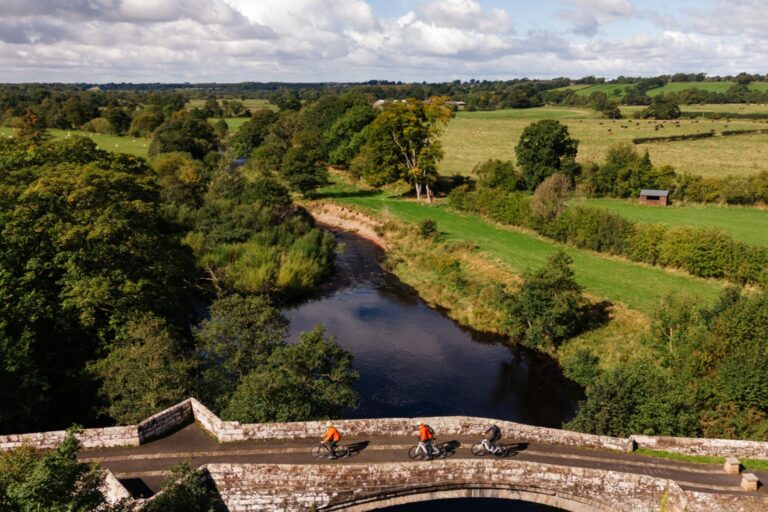January 23, 2025
8 mins
Destination: The North
Share
In this article
A Complete Guide to Walking Hadrian’s Wall Coast to Coast
A staggering 2,000 years ago, some 15,000 Roman soldiers built Hadrian’s Wall following Roman Emperor Hadrian’s visit to Britain. Its purpose: to serve as the northern frontier of the Roman Empire, which it did for 300 years, separating territories that were controlled by the Picts.
Fast forward to today, and Hadrian’s Wall is a popular destination for walkers and cyclers looking for a challenge. Made even more famous by Alfred Wainwright who, in 1973, famously mapped the Coast to Coast route along (and adjacent to) the wall.
There are many ways to enjoy Hadrian’s Wall and you don’t have to do it all! Many visit the section known as ‘The Crag’s which encompasses some of the most breathtaking sections of the wall with Roman forts and ruins galore!
But if you did want to walk the whole Hadrian’s Wall Path, what would you need to consider? This is our guide to walking the Hadrian’s Wall Path National Trail.
Map of Hadrian’s Wall
Hadrian’s Wall Path facts
- Total distance: 84 miles
- Average time to complete the route: 6-9 days
- Average Daily Walk: 9-4 miles
- Counties Traversed: Cumbria and Northumberland
- Highest Point: Winshield Crags: 1,132 ft / 345m
- Designation: One of 16 National Trails in England and Wales
How long is the complete Hadrian’s Wall?
The original wall was 73 miles long – now stretching 192 miles – and homed 80 milecastles (small forts) all exactly the same, as well as six large forts that functioned like armed cities.
Sections of Hadrian’s Wall
Chunk 1: Bowness-on-Solway to Gilsland
- Time allowance: 3 days
- Distance: 30 miles
Chunk 2: The Crags
- Time allowance: 2 days
- Distance: 22 miles
Chunk 3: The Crags to Newcastle
- Time allowance: 3 days
- Distance: 35.5 miles/2–3 days
Chunk 4: Newcastle to South Shields
- Time allowance: 1-2 days
- Distance: 23.5 miles
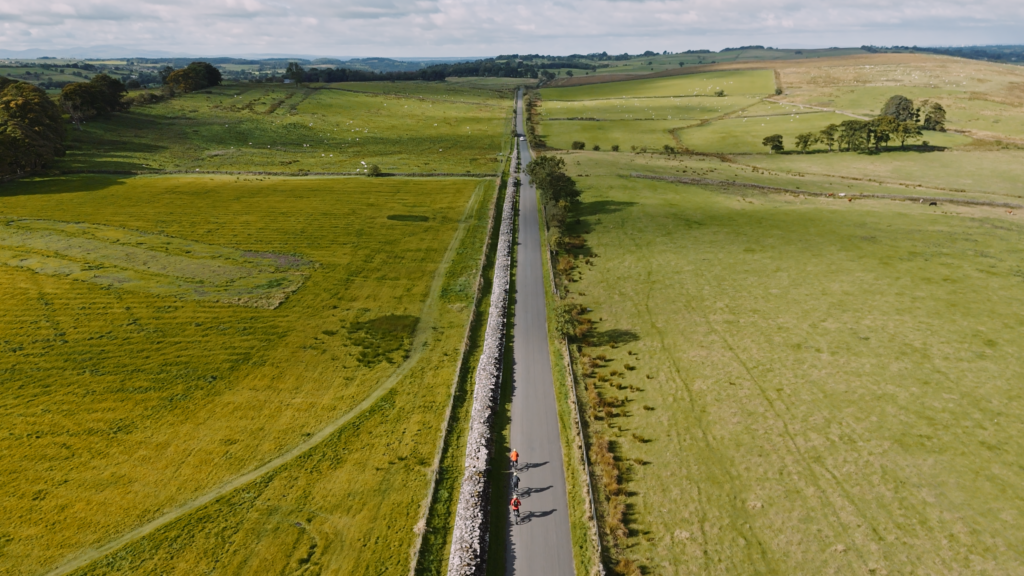
Hadrian’s Wall Walking options
Walking Hadrian’s Wall East to West or West to East
West to east walkers will start at travel into Carlisle and start their walk at Bowness-on-Solway; the east to westers will begin at Wallsend. The wall was built in the east-to-west direction, with the milecastles being numbered in the east-west sequence. But on the flip side, “Wallsend” on the east side, was first recorded around a millennium later in 1085 by people clearly preferring to see it as a west-east affair!
Option 1: East to West
You Get a Picturesque Finale
One of the main reasons walkers traverse the wall from east to west is that they get to finish their walk in a beautiful seaside location. Rather than reaching their final destination among the Newcastle suburban sprawl, many prefer getting the ugly urban part of the wall out of the way first and reaching the end of their walk on the Solway coastline with an ice-cream on the beach.
You Get Shorter Walking Days at the Start
Because of the density of accommodation options, an east-to-west route makes it easier for you to do shorter days at the start of your trip when you might still be a little rusty. By contrast, accommodation on the west-to-east route is much more sparse at the start, so walkers are in at the deep end in times of miles per day.
You Benefit from the Visitor Centre
Finally, the Segedunum Roman Fort and Museum at Wallsend is worth doing, and even better if you can do it at the start of your walk. Here, you can explore tonnes of information about the wall and its history, as well as things to look out for on the route.
Option 2: Walking West to East
The Prevailing Wind
The most common reason people choose to go west to east is that they get the help of the westerly wind propelling them forward. Walking into it from the other direction can be a battle, especially on a windy/stormy day. That said, if you’re walking in the summer months, you might be glad of a cool wind on your face!
Celebrate in the city
Walking the traditional route from West to East means you’ll finish your walk in the vibrant city of Newcastle. With plenty of dinning options and places to rest your legs, you can enjoy an evening in the city with a relaxing stay at one of the many hotels. If you still have energy to burn, Newcastle has cracking nightlife with bars and clubs buzzing almost every night of the week thanks to its student population and adoring football fans that will always be out on a ‘school night’!
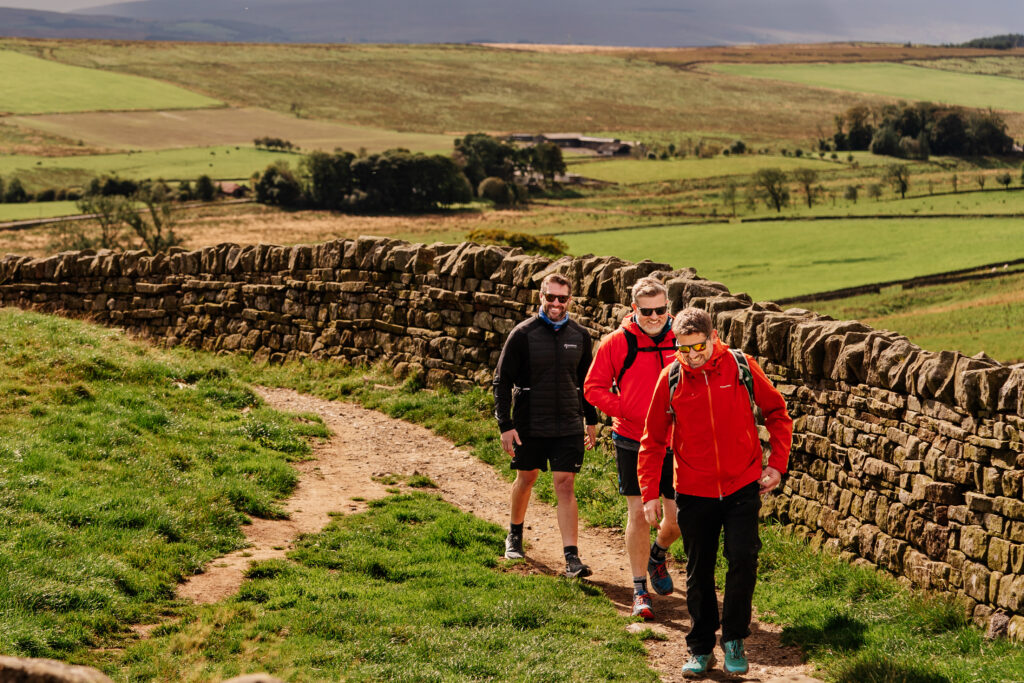
5 Top Tips For Walking the Hadrian’s Wall Path National Trail
1) You Can Get a “Hadrian’s Wall Passport”
Something a little novelty, but a good souvenir nonetheless, you can pick up a passport for £5.99 that gets stamped along the way (there are six stamping stations in total). The great thing about this is that the whole £5.99 goes directly to the maintenance of the wall.
As well as your passport, you can pay a few quid for a certificate to confirm you’ve completed Hadrian’s Wall walk and even an achiever’s badge!
2) Prepare for long daily walks
It’s always worth planning your overnight stops in advance of starting your walk based on how long you think you’ll manage to walk each day. It’s also worth planning ahead of time where you’ll be eating dinner. The last thing you’ll want to do once you’ve reached your overnight accommodation is to have to trek another mile to the nearest pub!
But no matter how meticulously you plan, you should be aware that some days are going to be tougher than others, so you need to allow for longer days. Some of the harder stretches that require a bit of scrambling, or days when weather conditions aren’t in your favour, may add extra time to your walking day. Not to be helped, but worth being aware of.

3) Book ahead for visiting the Roman Forts
Hadrian’s Wall walk is only ever enriched by its points of historical interest. And we’d certainly recommend checking out some of the milecastles and forts along your route, particularly Vindolanda, Birdoswold and Housesteads. But don’t forget to book a timed appointment in advance.
The potential problem with booking an appointment is that when you’re walking Hadrian’s Wall, there’s always the chance of delays, and it’s often difficult to judge how long each section of your walk will take. That said, if you do want to visit one of the forts then it’s unlikely you’ll get lucky for an available appointment to look around.
4) You can cycle Hadrian’s Wall
When you think of Hadrian’s Wall, most people think of the walk – whether that be on the wall itself (the tougher option) or right beside along the Military Road. But, imagine cycling Hadrian’s Wall?
You have the option of starting in the beautiful coastal town of Silloth-on-Solway rather than Bowness, and traversing the Coast to Coast route on two wheels.
Or, if you’re feeling more adventurous, “Route 77”, as it’s known, is the 170-mile cycle route that takes you from Ravenglass in the Lake District all the way up to Silloth, and all the way across to South Shields on the east coast.

5) Not All of It Is Scenic
You can’t look at an image of Hadrian’s Wall online without falling in love with its sheer beauty. The two-thousand-year-old ramshackle stones snaking their way through sweeping green hills, ancient forts standing strong amongst a patchwork of fields of grasslands and gorse. You’d be forgiven for thinking your walk will be a back-to-back idyll.
But, whilst there are vast swathes of intense beauty along Hadrian’s Wall (especially in the central section), not every stretch is like this. In fact, much of the wall is covered by mounds of grass, and then there’s the Newcastle section, which is mainly walking through suburbia.
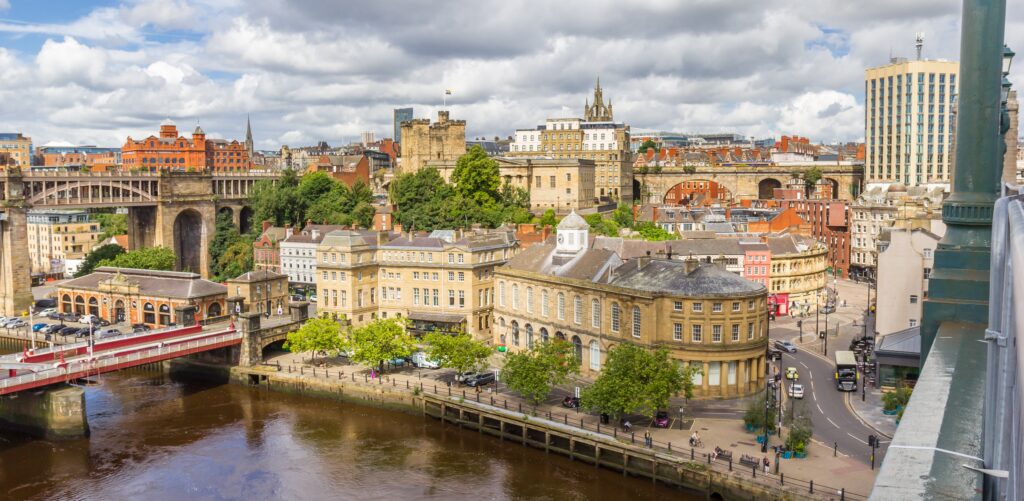
What You’ll Need
Weather conditions in the north of England can be unreliable – and often wet – and so waterproofs are an absolute must. If you’re planning on completing the full Coast to Coast, you’re more than likely to be rained on at some point.
Good footwear is also imperative and, although big trekking boots aren’t absolutely necessary, they might be helpful on wet and slippery parts of the walk. It’s also worth bringing a first aid kit including blister plasters in case of accidents, or just sore feet!
You might want to consider getting your luggage transferred along your walk, using companies like Hadrian’s Haul. They’ll collect your bags each morning and take them to your next overnight accommodation, costing around £7 per bag per daily transfer.
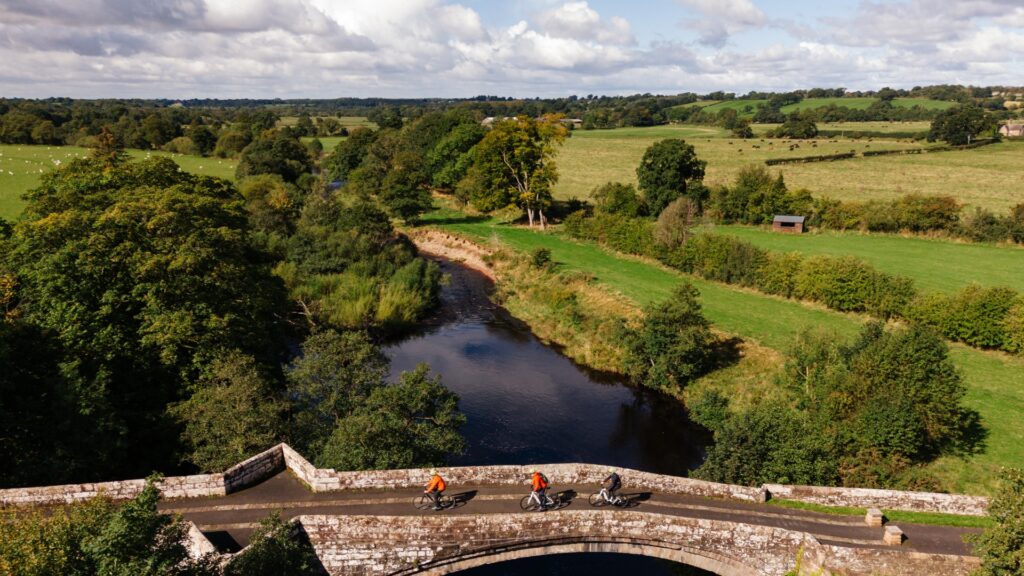
Getting There
The best way to get to the Coast to Coast path is via Carlisle if starting in the west or Newcastle if entering from the east. Both are cities well connected by rail.
Onwards from Carlisle is the AD122 (beautifully named!) bus that connects with Bowness-on-Solway running from Spring to September and connects the Birdoswald Roman Fort to Hexham, stopping at various historical sites including Vindolanda Roman Fort.
Bonus tip: You don’t have to organise it all yourself
The tip you’ve been waiting for!
As you can see, there are quite a few things to think about (and potential problems) when walking Hadrian’s Wall.
Here at Active England Tours we do all the legwork (not literally!) for you, manage the logistics and take care of your luggage and accommodation, so all you have to do is to walk – or cycle – the route. Easy!
If you’d like to know more, check out our tours of Northumberland and the Lake District.



